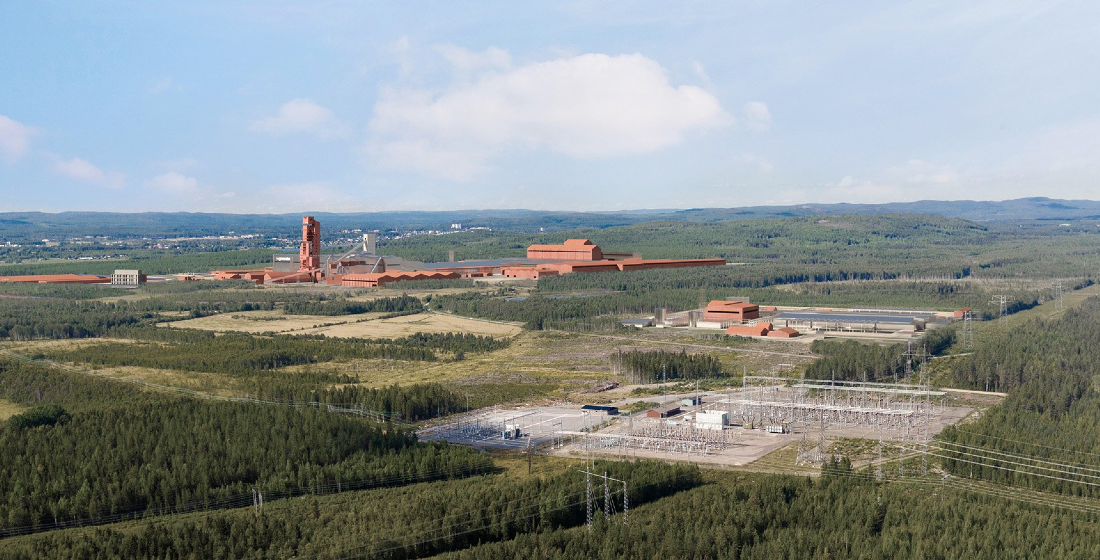H2 Green Steel Boden: Long on ambitions, low on emissions
H2GS was founded by Vargas in 2020 and launched in 2021. Three years later it has finalised funding for the world’s first green steel mega project. How? By being open to forensic risk analysis by its lenders, getting offtakers to take an equity stake in the project and understanding its customer base.

There are three rules to joining the green hydrogen megaproject financing club – offtake, offtake and offtake.
Because of the price difference between grey and green hydrogen, the existing global customer base for green hydrogen is small (albeit predicted to grow substantially after 2030 as the price differential shrinks and supply chains grow). Consequently, in the early stages of market development, the key to getting any green hydrogen project financing closed is the strength of the offtake contract and the offtaker – as Air Products’ involvement (as both co-sponsor and offtaker) in the record-setting Neom Green Hydrogen project financing in Saudi demonstrated last year.
H2 Green Steel (H2GS) – the world’s second green hydrogen mega project – has taken a similar approach to Neom for its hydrogen-powered steel manufacturing project in Boden, Sweden. H2GS is itself full hydrogen offtaker for the scheme, but also has offtake contracts for around half of its initial 2.5 mtpa steel production already in place (the second phase of the project will see production increase to 5 mtpa by 2030).
The seven-year take-or-pay steel offtake contracts are an achievement for two reasons: seven-year offtakes are very long tenor for the steel market because pricing volatility makes short-term or merchant supply deals the offtakers contract of choice; and H2GS has been selling its future green steel production at a 20% premium to traditional steel.
H2GS claims it could have put in place more initial offtake contracts, but decided not to because it believes green steel pricing will continue to develop favourably in the coming years. In recent months the steel offtake market has demonstrated willingness to pay a 30% premium for green steel – a significant increase on the 20% premium H2GS garnered from its first supply agreements.
Why are offtakers willing to pay more for green steel? According to H2GS CFO Otto Gernandt, it is about “more bang for your buck. Steel is generally part of a much wider cost base for whatever the offtaker is manufacturing. So the green steel premium will likely only increase the cost of the manufacturer’s end product by around 1%. At the same time, traditional steel production is a very dirty process. H2GS cuts steel production emissions by up to 95%, so by using green steel the offtaker/manufacturer can cut its overall manufacturing emissions by up to 40% for example.”
That simple math – 1% overall cost increase for 40% emissions decrease on the final manufactured product – has enabled H2GS to get a long list of very solid credits signed up to term sheets or steel supply agreements: Adient, BE Group, Bilstein Group, BMW, Electrolux, Ingka/IKEA, Kingspan, Kirchhoff, Klockner & Co, Lindab, Marcegaglia, Mercedes-Benz, Miele, Mubea, Porsche, Purmo Group, Roba Metals, Scania, Schaeffler, Volvo, Zekelman Industries and ZF Group.
There is also a marketing advantage for all these manufacturers – perhaps not in parts of the US where the Republicans are pushing an anti ESG investment dogma, but certainly in Europe. For example, given the choice between buying a ‘green’ product of similar price and performance, market research suggests European buyers are more likely to opt for the one that can demonstrate decarbonisation across the whole manufacturing process and not just as an end result.
A multi-sourced financing
Of those that have signed long-term steel offtake contracts with H2GS, Schaeffler, Scania, Mercedes-Benz, Bilstein and Marcegaglia are also equity investors in the project – which gave lenders additional comfort on the financing.
The multi-sourced debt facilities backing the €6 billion-plus project signed on 21 December 2023 and are expected to reach financial close in Q1.
Conditional financing commitments for much of the debt for the project have been in place since 2022 and were renewed in July 2023. The final deal generated strong appetite from commercial lenders (both banks and institutional investors), due in part to export credit agency and DFI support.
The overall financing for H2GS comprises €4.15 billion of senior and junior debt, complemented by three equity raises – a series A equity round of €86 million in May 2021, a series B1 round of €260 million in October 2022 and a €1.5 billion round in September 2023 (plus another €300 million in a second close on the same round this year). Total equity now stands at €2.1 billion. H2GS was also awarded €250 million of EU innovation grant funding in 2023.
The €1.5 billion equity round was co-led by new investor Hy24 and existing investors Altor, GIC and Just Climate. New investors that joined were Andra AP-fonden and Temasek, and many existing investors put up additional equity: AMF, Cristina Stenbeck, Hitachi Energy, IMAS Foundation, Kinnevik, Schaeffler, Vargas and Wallenberg Investments holding company FAM. Morgan Stanley advised H2GS on the deal. The second close on the same round also brought in Microsoft Climate Innovation Fund, Mubea and Siemens Financial Services.
H2GS investors from the earlier equity rounds also include Kobe Steel, Swedbank Robur Alternative Equity, Kingspan Global, Marcegaglia, Ane & Robert Maersk Uggla, Bilstein Group, EIT InnoEnergy, Exor, Mercedes-Benz, Scania, SMS Group, Stena Metall Finans and Daniel Ek.
The debt facilities for the project comprise two €1.2 billion 12.75-year tranches with 95% and 80% cover provided by Euler Hermes and Riksgalden (Swedish National debt Office) respectively, a €200 million 12.75-year direct loan from the EIB, a €250 million 12.75-year term loan, a €300 million 12.75-year revolving credit and a €400 million 12.75-year contingency tranche.
There is also a 13.25-year €600 million junior debt tranche provided by a mix of banks and institutional lenders that include AIP Management, Stichting Pensioenfonds ABP, ASA Alternative Credits Bank Loans, CSF-I 3 SPV K/S and Clifford Capital.
Riksgalden is providing cover under its green credit guarantee for large industrial investments scheme. Riksgalden’s first such guarantee – cover for a SEK3 billion (€262 million) seven-year loan by SEK to Preem to finance an upgrade of its Synsat refinery to produce diesel from renewable raw material – closed in December 2022, so the product is relatively new and has not been used before on the scale of the H2GS deal (Riksgalden’s cover on H2GS is more than three times the volume guaranteed on the Synsat refinery project).
The Euler Hermes covered tranche is also a new benchmark for the ECA in terms of hydrogen project debt cover – at €1.2 billion it is roughly twice the $650 million volume Euler Hermes guaranteed on the Neom Green Hydrogen deal. The cover is linked to thyssenkrupp nucera having the EPC contract to deliver the 690MW electrolyser for the project, which will also be Europe’s first gigascale electrolyser.
The project bank line-up is arguably your usual suspects. The mandated lead arrangers (MLAs) on the deal are ING Bank, ABN Amro, Santander, BNP Paribas, Deutsche Bank, KfW IPEX-Bank (also financial advisor), Societe Generale (also financial advisor), UniCredit and Intesa Sanpaolo (SEK is also an MLA).
The commercial banks on the debt also include BBVA, Santander, BayernLB, Citi, Rabobank, Credit Agricole, Danske Bank, DNB Bank, Intesa Sanpaolo, Banque Internationale à Luxembourg, Kommunalkredit Austria, Nordea, Skandinaviska Enskilda Banken (SEB) and SMBC. And in terms of DFI support, in addition to the EIB direct loan, Nordic Investment Bank (NIB) is providing €57 million to the project finance package.
The Proximo perspective
A 2020 start-up raising €4.15 billion of non recourse loans for a project partially underpinned by offtake contracts that are almost six years shorter than the tenor on the debt – it is the kind of ambition that normally raises sniggers from forensic bank credit committees, even when half the debt comes with cover.
Doing that for a global first – a pathfinder hydrogen-powered steel manufacturing mega project – turns sniggers into howls, and takes communicating the credit risk and mitigants to another level.
And reading the willingness of steel buyers to accept long-term take or pay contracts at a 20%-plus premium to traditional steel verges on offtaker-whispering.
H2GS has pulled off all three – the deal speaks for itself.





